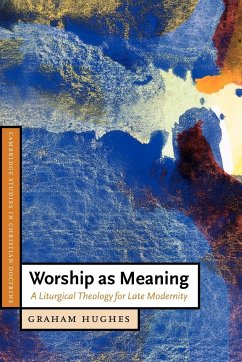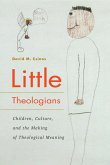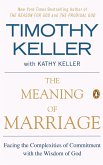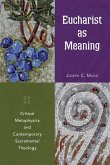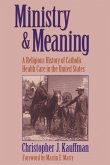Short description/annotation
An examination of Christian worship within the context of modern theories of meaning.
Main description
How, in this Christian age of belief, can we draw sense from the ritual acts of Christians assembled in worship(?)33; Convinced that people shape their meanings from the meanings available to them, Graham Hughes inquires into liturgical constructions of meaning within the larger cultural context of late twentieth-century meaning theory. Major theories of meaning are examined in terms of their contribution or hindrance to this meaning making: analytic philosophy, phenomenology, structuralism and deconstruction. Drawing particularly upon the work of Charles Peirce, Hughes turns to semiotic theory to analyse the construction, transmission and apprehension of meaning within an actual worship service. Finally the book analyses the ways in which various worshipping styles of western Christianity undertake this meaning making. Taking account of late modern values and precepts, this ground-breaking book will appeal to teachers and students of theology, to clergy, and to thoughtful lay Christians.
Table of contents:
Introduction; Part I. The Making of Meaning: 1. Meaning in worship; 2. 'Theory of Meaning' at the end of the twentieth century; 3. Dimensions of a theory of meaning for worship; Part II. Signs of Wonder: 4. The liturgical sign (i); 5. The liturgical sign (ii); 6. Sign production, sign reception; 7. Liturgical theology; 8. At the edge of the known; Epilogue; Bibliography.
Hinweis: Dieser Artikel kann nur an eine deutsche Lieferadresse ausgeliefert werden.
An examination of Christian worship within the context of modern theories of meaning.
Main description
How, in this Christian age of belief, can we draw sense from the ritual acts of Christians assembled in worship(?)33; Convinced that people shape their meanings from the meanings available to them, Graham Hughes inquires into liturgical constructions of meaning within the larger cultural context of late twentieth-century meaning theory. Major theories of meaning are examined in terms of their contribution or hindrance to this meaning making: analytic philosophy, phenomenology, structuralism and deconstruction. Drawing particularly upon the work of Charles Peirce, Hughes turns to semiotic theory to analyse the construction, transmission and apprehension of meaning within an actual worship service. Finally the book analyses the ways in which various worshipping styles of western Christianity undertake this meaning making. Taking account of late modern values and precepts, this ground-breaking book will appeal to teachers and students of theology, to clergy, and to thoughtful lay Christians.
Table of contents:
Introduction; Part I. The Making of Meaning: 1. Meaning in worship; 2. 'Theory of Meaning' at the end of the twentieth century; 3. Dimensions of a theory of meaning for worship; Part II. Signs of Wonder: 4. The liturgical sign (i); 5. The liturgical sign (ii); 6. Sign production, sign reception; 7. Liturgical theology; 8. At the edge of the known; Epilogue; Bibliography.
Hinweis: Dieser Artikel kann nur an eine deutsche Lieferadresse ausgeliefert werden.

